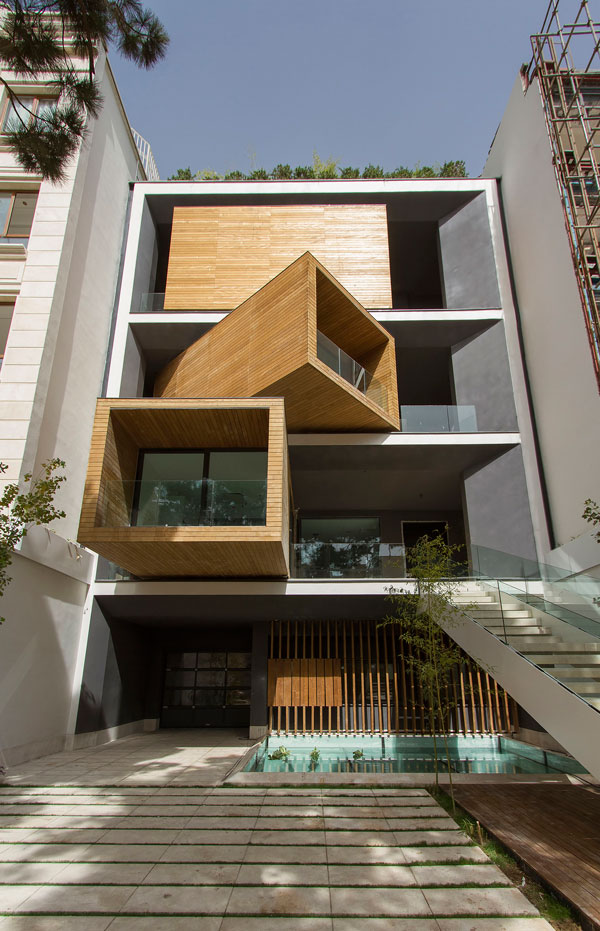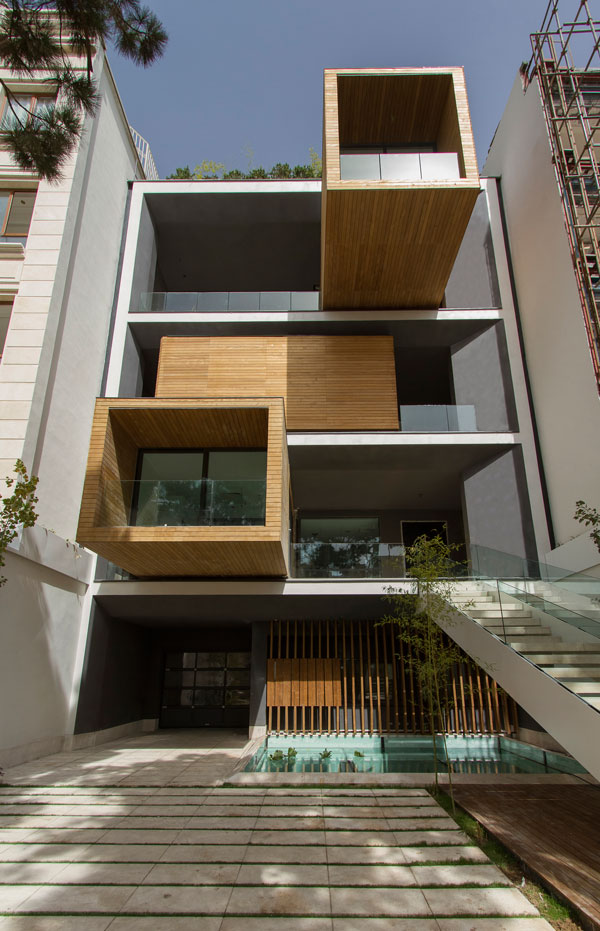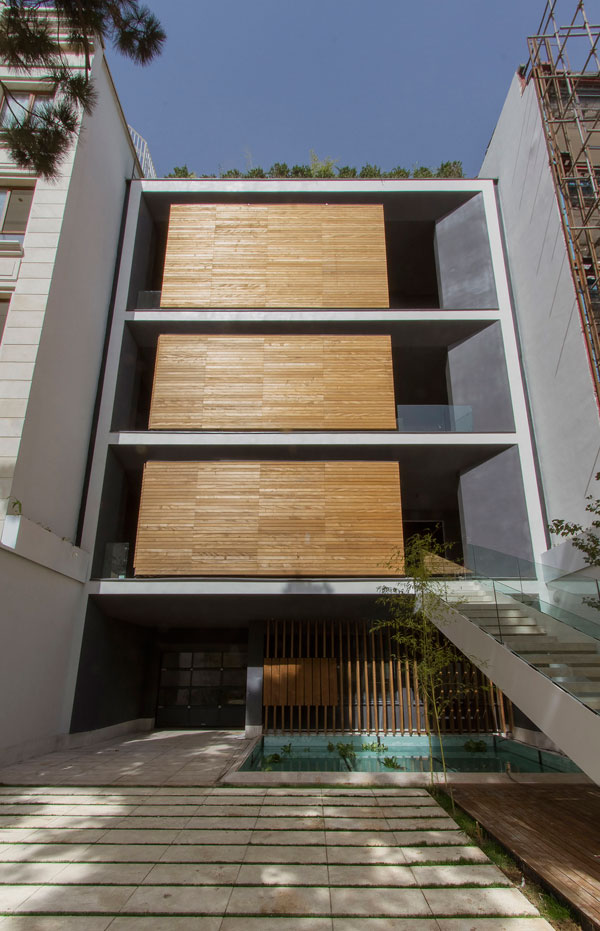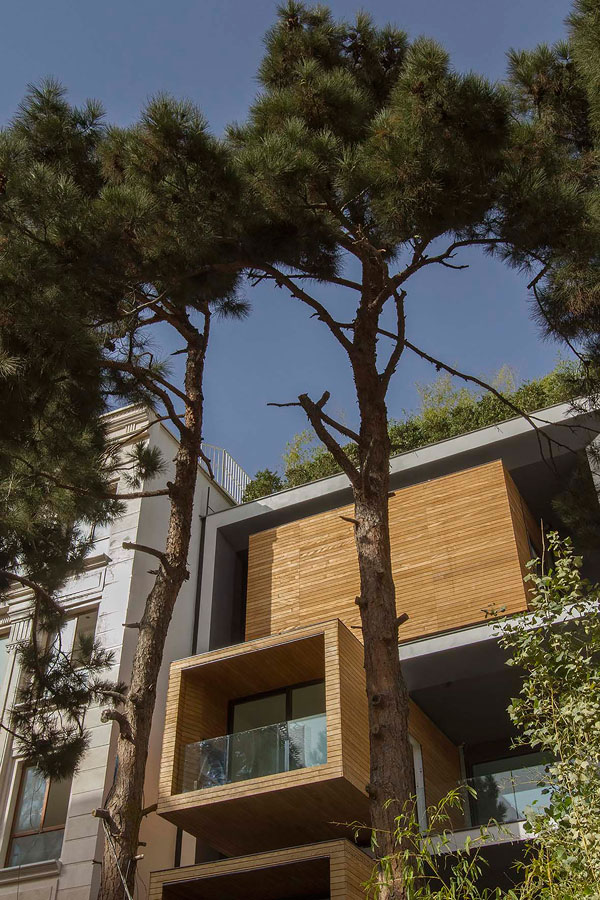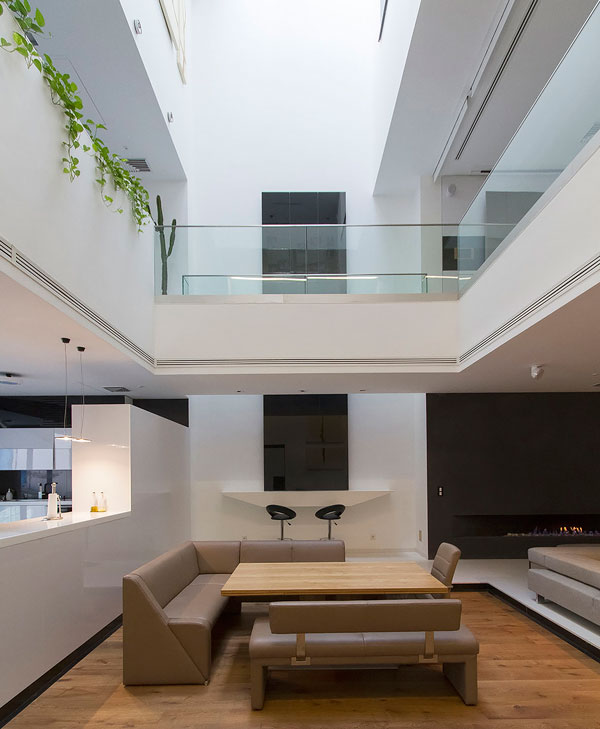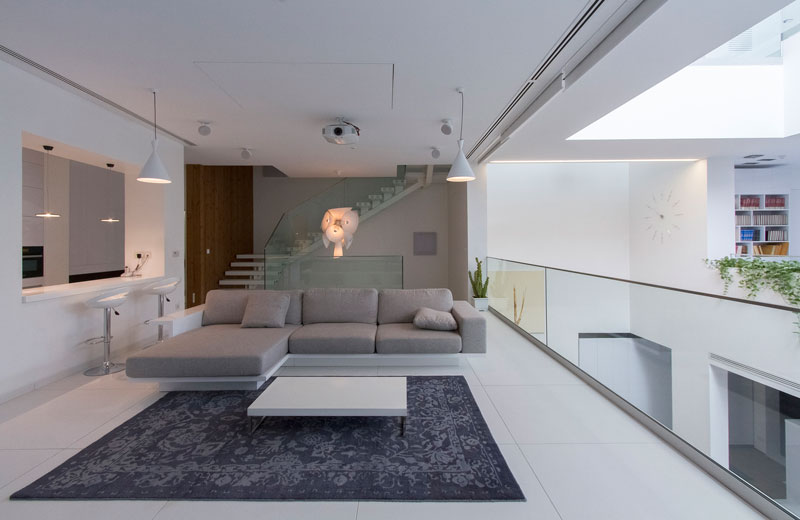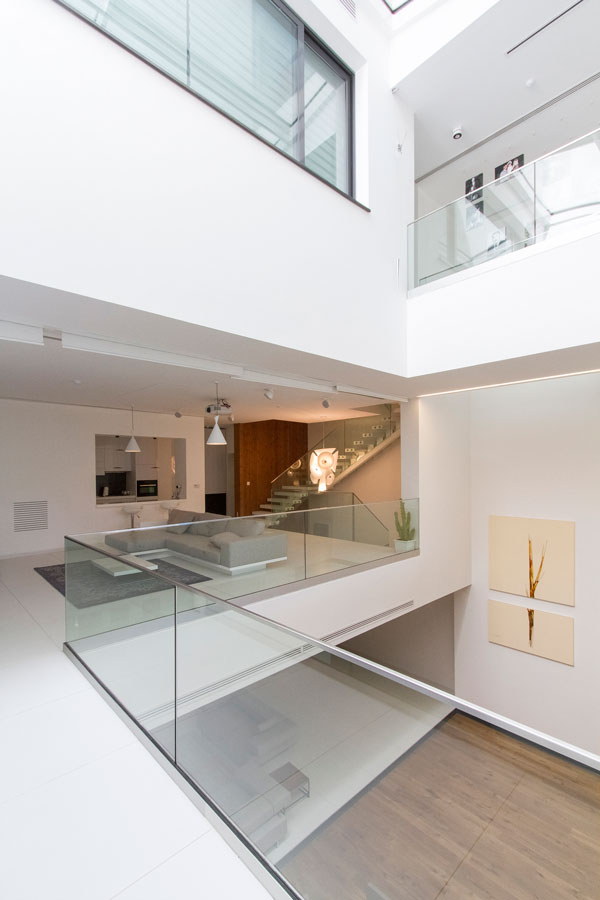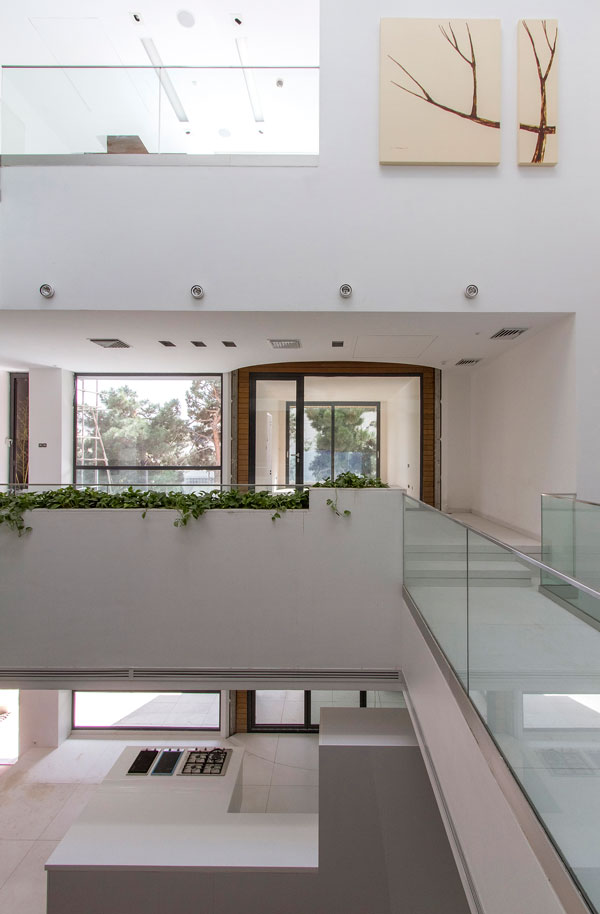- Share
- Like
- Tweet
- Digg
- Tumblr
- VKontakte
- Love This
- Odnoklassniki
- Meneame
- Blogger
- Amazon
- Yahoo Mail
- Gmail
- AOL
- Newsvine
- HackerNews
- Evernote
- MySpace
- Mail.ru
- Viadeo
- Line
- Comments
- SMS
- Viber
- Telegram
- Subscribe
- Skype
- Facebook Messenger
- Kakao
- LiveJournal
- Yammer
- Edgar
- Fintel
- Instapaper
- Copy Link
Iran based architects nextoffice designed a spectacular house that features a set of turning boxes that lead the building’s volume to become open or closed. With uncertainty and flexibility at the base of the design concept, Sharifi-ha House is a building that adjusts according to changing seasons or functional scenarios. The title of the house was chosen in honour of traditional Iranian mansions, and was recently shortlisted for the World Architecture Festival Award 2014.
Being situated on a very narrow lot, the Sharifi-ha House transforms itself from an open, transparent and perforated volume with wide large terraces in the summer, to a closed volume with minimum opening to overcome Tehran’s cold, snowy winters.
Consequently, our expertise in transforming a two-dimensional façade to a three-dimensional one became indispensable. Here, the openness /closure of the building’s volume is a reference to traditional Iranian houses, which would dynamically serve as seasonal modes of habitation by offering both a Zemestan-Neshin (a winter living room) and Taabestan-Neshin (a summer living room) to their residents.
The house is distributed over seven floors with a clear distinction between public and private spaces. The two basement floors are allocated to family conviviality, fitness facilities, and wellness areas, while the ground floor hosts parking and housekeeping rooms. The first and second floors incorporate all public activities, with the more private functions reserved for the third and fourth floor.
The impressive structure of the house showcases four major elements: the fixed volume of the structure, the void, and the fixed volume and the mobile volume, respectively. When the turning boxes are closed, the building captures sunlight throughout the space of the central void, which also connects the two fixed volumes by suspended bridges.
The house adapts to the functional needs of its users. The mobile volumes can be easily reconfigured to repurpose a space. The turning rooms on the first and third floors are assigned to home offices and breakfast rooms, however they can easily change the formality of their appearance. With a house in constant change, there is always the possibility of having different lighting and seasonal scenarios. Alternative configurations of the house have already been taken into consideration from early stages of the design.
From the initial design steps, we noticed that three pine trees outside could be incorporated into the spaces of the interior. Now, in the open mode of the house, the trees are pleasantly captured by the window frames.
Stepping back for about three meters from the permitted construction boundary line allowed us to provide splendid daylight for the basement floors by inserting a glass fountain. The fitness and wellness areas are accommodated between the fountain’s two small basins, whose mirrored sculptures reflect the water’s radiance throughout the space.
The architects applied the same manufacturing technique for the turning mechanism used in mobile theatrical scenes. A major challenge was developing and designing foldable handrails and refining the boxes’ edges. ‘Considering the specialties of this kind of architecture, the structural system was inevitably irregular. After digitally modeling the structure, a series of SAP2000 analyses were undertaken to examine static/dynamic performance of the proposed system. Being partially moveable is the dominant feature of this structural assembly, which was contemplated throughout the fabrication process by the German manufacturer company. The main loads all rest on the beams of the living rooms’, say the architects.
Due to the various configurations the turning boxes may take, the loading calculation has been estimated based on the largest possible loading value applied to the system. Additionally, controlling the probable vibrations to prevent structural deformation in the turning boxes was taken into account during the design of the house.
See below drawings and conceptual diagrams






Facts:
Clients: Mojgan Zare Nayeri, Farshad Sharifi Nikabadi
Address: No.3, Dead-End Sharifi, Saleh Hosseini st, Darrous, Tehran
Date: 2010-2013
Area: 1400 m²
Designer: Alireza Taghaboni
Design Associates: Roohollah Rasouli, Farideh Aghamohammadi,
Detailing Design Associates: Bahoor Office (Hamid mohammadi, Amir Taleshi)
Senior Consultant in Detail: Shahnaz Goharbakhsh
Supervisions: Shahnaz Goharbakhsh, Alireza Taghaboni
Project Associates: Mojtaba Moradi, Negar Rahnamazadeh, Asal Karami, Majid Jahangiri, Masoud Saghi, Hossein Naghavi, Fatemeh S.Tabatabaeian, Iman Jalilvand
Construction: Imen Sazeh Fadak Consulting Eng
Landscape Consultant: Babak Mostofi Sadri, Omid Abbas Fardi
Structural Design: Sohrab Falahi
Mechanical Consultant: Hoofar Esmaeili
Electrical Consultant: Mohammad Torkamani
Revolving Rooms System: Bumat Company
Photographer: Parham Taghioff, Salar Motahari, Majid Jahangiri
*All images and information courtesy of nextoffice.



